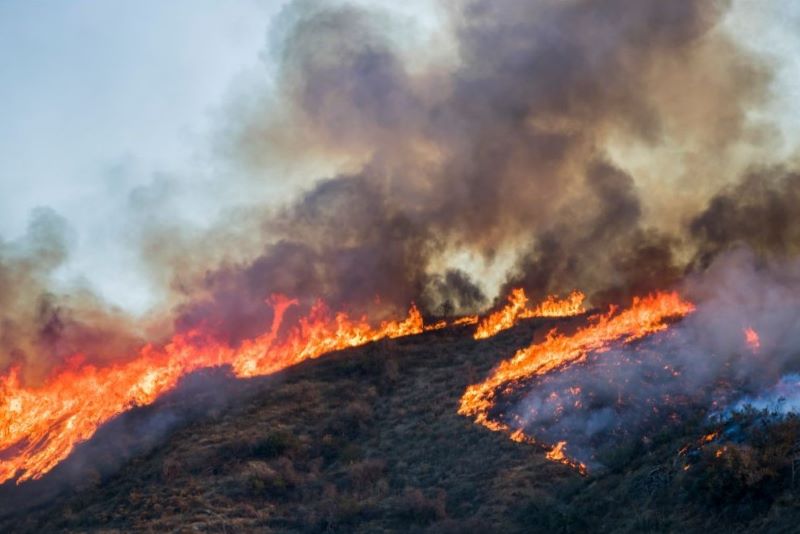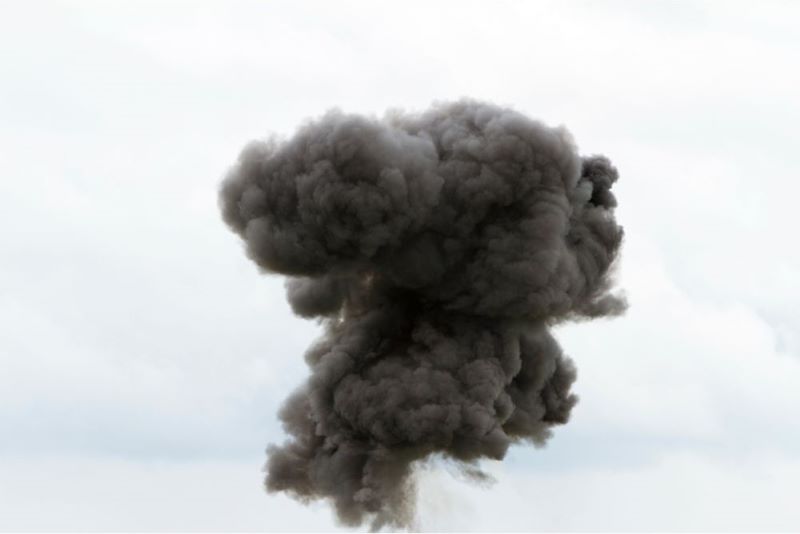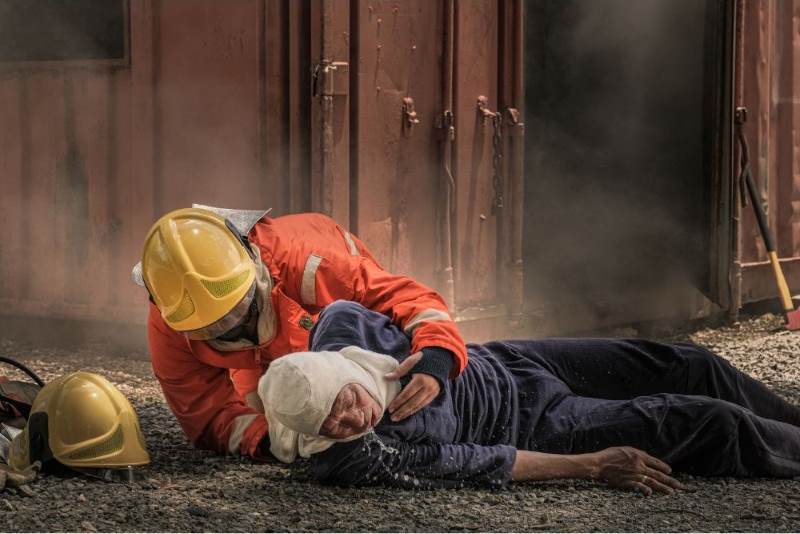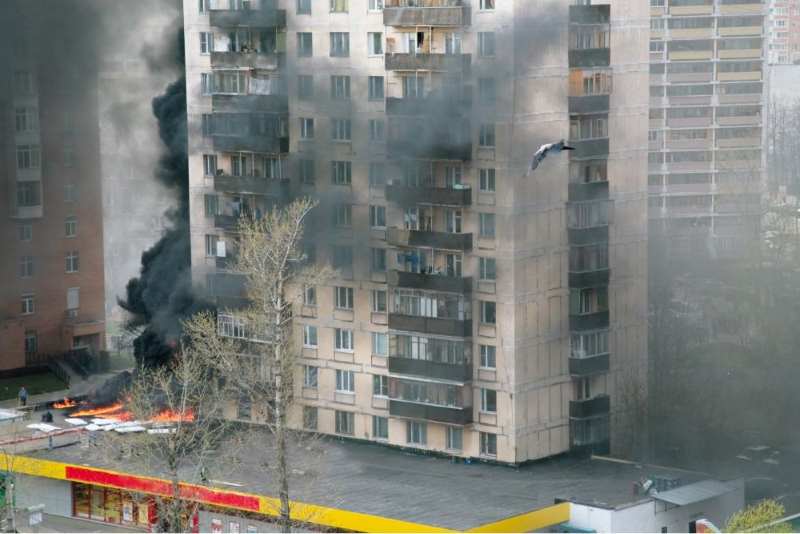If your property has ever experienced a fire, no matter how big or small, you understand that the damage that is suffered goes beyond what the smoke and flames themselves did. Beyond the damage caused by the fire, smoke and soot can create apparent and invisible damage. Many different types of smoke may lead to damage.
Let’s discuss how to identify these types of smoke and when to get help from professionals.
What is Smoke?
A visible collection of different solid, liquid, and gas particles that are not completely burnt during combustion is called smoke. While most visible smoke is made up of carbon, or soot, tar, oils, and ash, smoke can also contain a wide variety of other compounds and gasses. Smoke can include a wide range of contaminants due to its extensive number of chemicals.
What Are the Types of Smoke?

The colour of the smoke does not always correspond to the type of source of the burning unless it is a single-fuel fire. Still, the colour of the smoke can tell both the homeowner and the firefighter where the fire is burning on the property and at what stage of burning.
The smoke changes colour as the materials begin to dry out. The colour of the smoke varies depending on the material being burned.
White Smoke
It frequently indicates that the fire is only beginning to consume the substance since the material is off-gassing moisture and water vapour. Furthermore, white smoke might indicate flammable fuels like grass or twigs.
Black (Thick) Smoke
It is an indication of partially consumed heavy fuels. Black smoke usually appears as a sign that something artificial, like tyres, cars, or structures, is catching fire. Generally speaking, the more intense the fire, the black the smoke.
Black smoke tends to stick to surfaces and walls, leaving smeared residue in the aftermath. This residue should not be touched since it is going to stick to anything it comes into contact with. Any synthetic soot is best left to a professional cleaner.
Grey Smoke
It can be a sign that the fire is losing fuel and slowing down.
Blue Smoke
It shows that there are byproducts from the fuel or lubricating oil’s incomplete combustion involved.
The texture of the smoke is another way to determine the types of smoke, whether it is dry or wet.
Dry Smoke
Dry smoke leaves behind a dry, powdery soot. Paper and wood generate tremendous heat that causes it to burn. It usually wipes off readily and is simpler to clean. It is a fine soot, though, and can readily disappear from visibility by slipping into gaps and crevices. As the odour is hidden, it could even linger after cleaning. To clean the deep-seated remains, it is best to hire a cleaning professional.
Wet Smoke
Rubber or plastic burning is the cause of wet smoke. It smears, is sticky, has a strong smell, and low heat. Wet smoke tends to smear if you try to remove it from surfaces, leaving behind a thick, sticky residue that can make cleaning much more challenging. The odour is difficult to handle, and wet smoke removal frequently requires the use of professional cleaning tools.
Types of Smoke Signals

Smoke Volume is a helpful instrument for determining where something is and how much fuel is off-gassing in the area around it. The volume measurement is essential, but unfortunately, it only provides location-related information. Even when there is very little fire, there can be a lot of smoke.
Knowing what makes up an emission is the first step in learning the skill of reading smoke. Particulates, aerosols, and gases make up smoke, which has three characteristics:
Smoke Color
The visible shade of the range, known as “smoke colour,” indicates the fire’s stage and can help in identifying it. Most people believe that the most accurate indicator of how a fire act is the color of the smoke. Smoke colour is just one indicator among several that are used to forecast fire actions, so it’s important to keep that in mind.
Smoke Density
The thickness of the emission and the amount of fuel included in the smoke is referred to as smoke density. The term “optical density” describes how challenging it is to see through smoke.
Smoke Velocity
The speed at which smoke leaves a structure is known as its smoke velocity. The velocity serves as an indicator of the pressure that has accumulated inside the area.
What are the Health Effects of the Different Types of Smoke?

The health effects caused by being exposed to all types of smoke can vary.
The most common cause of death for victims of indoor fires is smoke inhalation, making smoke exposure during a house fire exceedingly deadly. Smoke inhalation, not burns, accounts for about 75% of home fire victims‘ deaths. Combustion produces smoke, which can be bothersome or dangerous depending on what is being burned. When plastics burn, for instance, they release harmful gasses like hydrogen chloride and carbon monoxide alongside soot. A new set of health risks is directly linked to the exposure to any further chemicals that are produced when burning different materials.
Conclusion
Smoke contains combustible substances, which is another health risk. Both their temperature and open flames can cause things to ignite with more oxygen around them. This causes a backdraught or a flashover effect.
More damage to a structure can frequently be caused by smoke than by flames or fire heat. Smoke causes pervasive stains and odours that are hard to get rid of.
Nevertheless, by knowing the aforementioned smoke signals (velocity, density, colour), as well as all types of smoke (white, black, grey, and blue), you can guess what will happen next and what is happening at the moment. Also, you can figure out when it’s time to hire professionals to clean the smoke and its residue.


